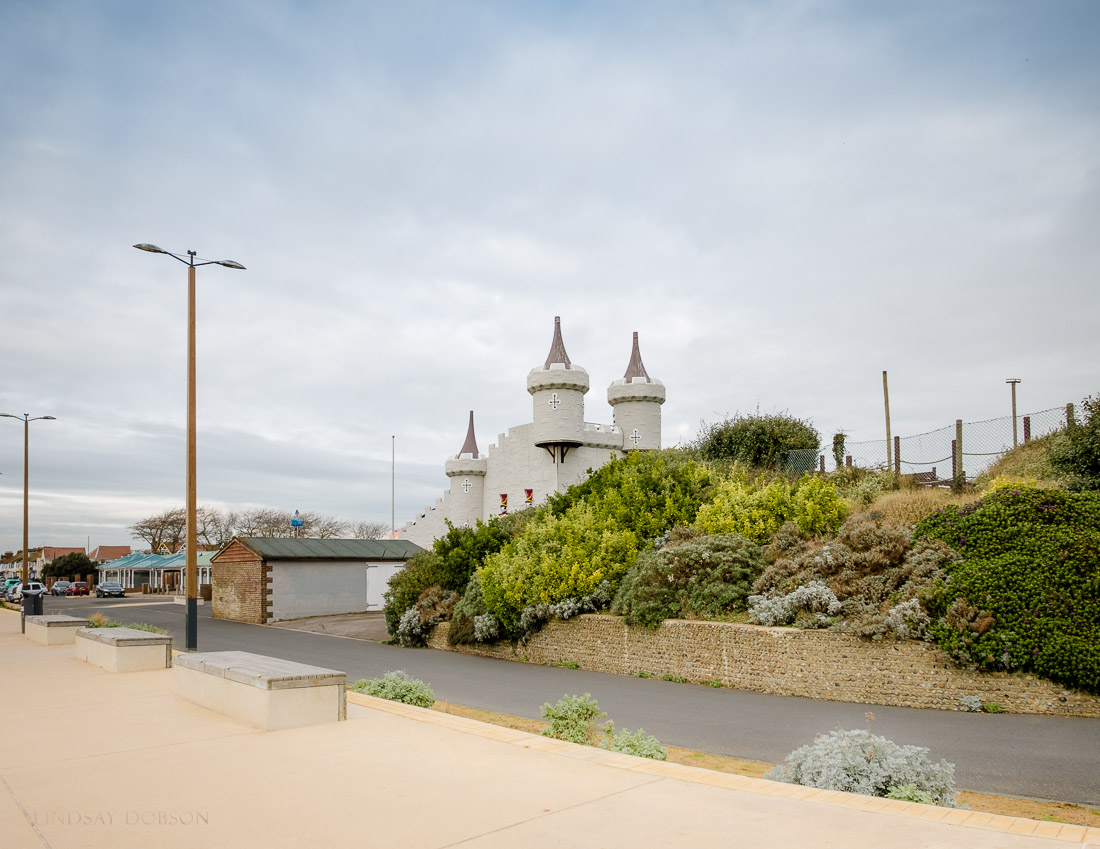The Best Camera for Family and Travel Photography
I've long been an advocate for always having a camera with you, wherever possible. I always have something in my handbag - currently it's my Panasonic LX100 which is arguably the finest compact camera ever made.
But it is safe to say that what is ‘best’ for one person may not be ‘best’ for someone else. I have relatives and friends who occasionally join me for a spot of recreational photography. It’s become increasingly clear when offering them a camera that my photographic needs are quite different to their preferences.
How to Choose the Best Camera for Family Holidays
I have a particular relative who happens to be quite a good photographer. He knows I'll always loan him a camera, so there hasn't been any particular requirement for him to buy his own. I shoot professionally with a mixture of Panasonic Micro 4/3, Sony APSC, and Sony full frame. But none of those cameras appeal to him. He complains they’re cramped, or the buttons are too small. Whilst as a professional I might consider him outrageously hard to please, there is some logic in what he's saying. When I choose professional cameras I have to have certain features above all else. Small size and weight is crucial to me as well. To get those two things the shape of my cameras may not appeal to casual recreational users. A DSLR arguably has excellent handling but can also be large and heavy - and that will raise its own complaints from its user. How do we make the right choice? The most important thing is to be absolutely clear about your needs and priorities.
With all that in mind I quizzed my family person to get him to tell me what he would like in his ideal setup:
Comfortable to hold with a good sized grip, suitable for long fingers
Decent sized buttons, not too close together
Not too complicated – suitable for a novice
Fast autofocus
The ability to take a general use telephoto super zoom giving as much reach as possible, at least 400 mm (FX equivalent) for wildlife
Not heavy
Financial outlay to remain in 3 figures
There are mirrorless cameras which fit those criteria quite well, I'm thinking along the lines of the Panasonic G80/85. But there is one sticking point with mirrorless bodies - the longest super zoom lenses currently available to them end at the 200 mm mark if we’re thinking of Sony (300mm equivalent in APSC terms) and 140mm (280mm equivalent if we choose u43). That isn't long enough for the person in question. He wants his camera and lens setup to cover him for everything from landscapes to small birds. That leaves me with two options - a bridge camera or the smallest and lightest DSLR I can find. Bridge cameras often have quite extreme telephoto capability. This is because they have small sensors and therefore a small image circle for a lens to cover. Consequently their lenses can be very small compared to the same focal lengths on a camera with a larger sensor. The downside is a reduction in image quality - bridge cameras aren't known for their high ISO capability or dynamic range.
Initially I went down the bridge camera route and purchased the much recommended Panasonic FZ1000. This felt wonderful in the hand - chunky but very well-balanced. And at about 840g, not too heavy. When I tested it I was able to wander around with the camera in one hand and a cup of tea or a bun in the other. I could shoot one-handed with absolute ease. The built-in lens offers a reach of 400 mm equivalent. But unfortunately the first unit which arrived had lens problems - it was unable to focus accurately over about 20 feet and all images over that distance were very soft. The replacement was better but had severe left side decentering in the wide to mid range. The third and final unit kept showing an error message instructing me to switch the camera off and on again - apparently a sign that the camera may be developing a serious fault. Needless to say, I wasn't particularly impressed by Panasonic's quality control with that particular model.
Aside from that, the image quality was quite good from the 1 inch sensor - a stop and a bit behind my GX8 in noise terms, and about two stops behind my A6300. This means it isn't going to be particularly useful in low light and of course there is no option to change to a faster lens. But bridge cameras are all about convenience, rather than critical application. And for that reason alone they can be great family cameras.
Panasonic FZ1000 Review Photographs
There is quite a big difference in sharpness and IQ between the Panasonic FZ1000 and larger sensor formats such as u43. You don't get the same colour reproduction or smooth tonality, there is less detail as well. But it’s fun to use and to uncritical users the image quality will be more than good enough:
Micro DSLR as an All Round Enthusiast Camera
Having now ruled out a bridge camera (the Sony models are too costly) this left me with the last option which would fit the criteria I was given – an entry level micro DSLR. These have arisen in recent years and they really are quite small, being a similar weight to my mirrorless bodies. It is in fact the sensor format which determines overall weight, because most of the weight will be in the lenses. As we’ve already said, a larger sensor demands lenses which will cover a larger image circle. My APSC mirrorless bodies are used with lightweight primes and f4 zooms which helps to keep weight down. Micro DSLRs are also APSC in terms of sensor size. But super zoom lenses of the type which will suit general family use and travel tend to be reasonably compact and lightweight, mostly due to their consumer-oriented build quality and slow maximum aperture.
There are a number of these super zooms available for DSLR users, including popular choices such as the Tamron 18-270 and the newer 16-300. In fact Tamron have recently released an 18-400 which will give an amazing 640 mm reach in equivalent terms when placed on a Canon x1.6 crop body. I'm really looking forward to testing this lens in a few weeks when Tamron will be loaning me one. In the meantime it's worth taking a look at Tamron’s 16-300, which I'll be doing shortly. It will be interesting to see the extent to which the well-known super zoom compromises manifest themselves between the older and the newer superzooms.
So, as a professional photographer and long-term mirrorless user, what's my opinion of the Canon 200D which was ordered as the new ‘family and travel cam’? Unfortunately I don’t have the camera yet – thanks to Amazon ‘losing’ it in transit (as they have several of my high value orders). I’ll have one soon enough and will review it anon.
My Personal Favourite - the Panasonic LX100
So while I’m waiting to get a 200D into my hands, here are a few snaps taken last week in Littlehampton. I had to visit Topps Tiles in Rustington (I can't believe I'm finally getting a new bathroom - the existing one has been in situ for 24 years!). After ordering the tiles it was a quick drive to the seafront for a short stroll and a cup of tea. And a few photos of how bleak our coastal towns can look in winter. It was freezing cold and there were very few people around. I had my LX100 with me and this camera is a pleasure to use – in fact it’s a street shooter’s dream. Despite having a 12.8 megapixel sensor the images are packed with detail, which means we can make quite large prints. Larger in fact than images from a 20 megapixel camera with a less pleasing lens. This is why you'll often hear photographers reinforcing the fact that your lenses are more important than your cameras. The LX100 doesn’t fit the wants of the person I’ve described at the head of this article, but it’s my constant companion. You can see at a glance the quality difference between these photographs and the output from the FZ1000. That’s due to the LX100 having a larger sensor and a much better lens (albeit a much shorter lens).




















